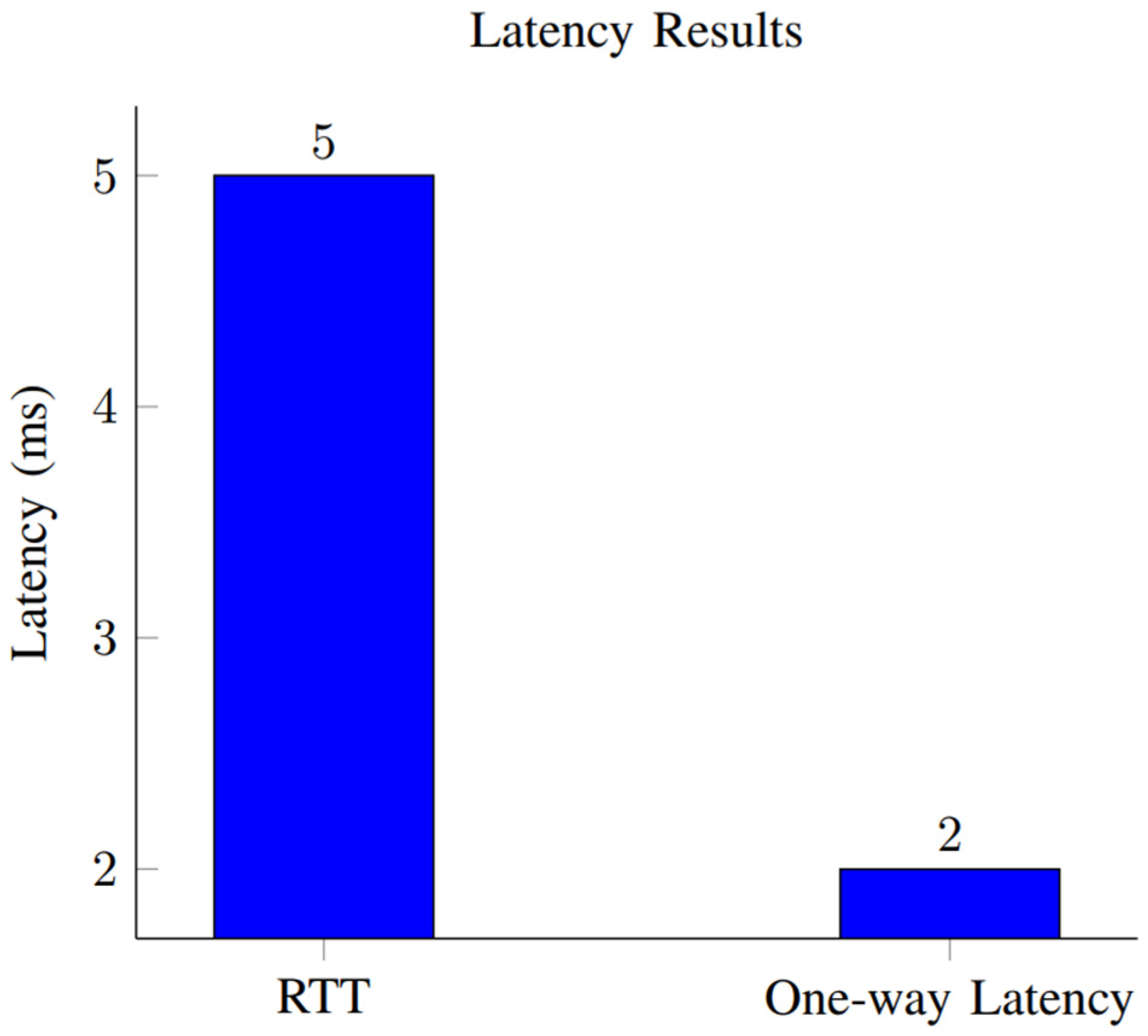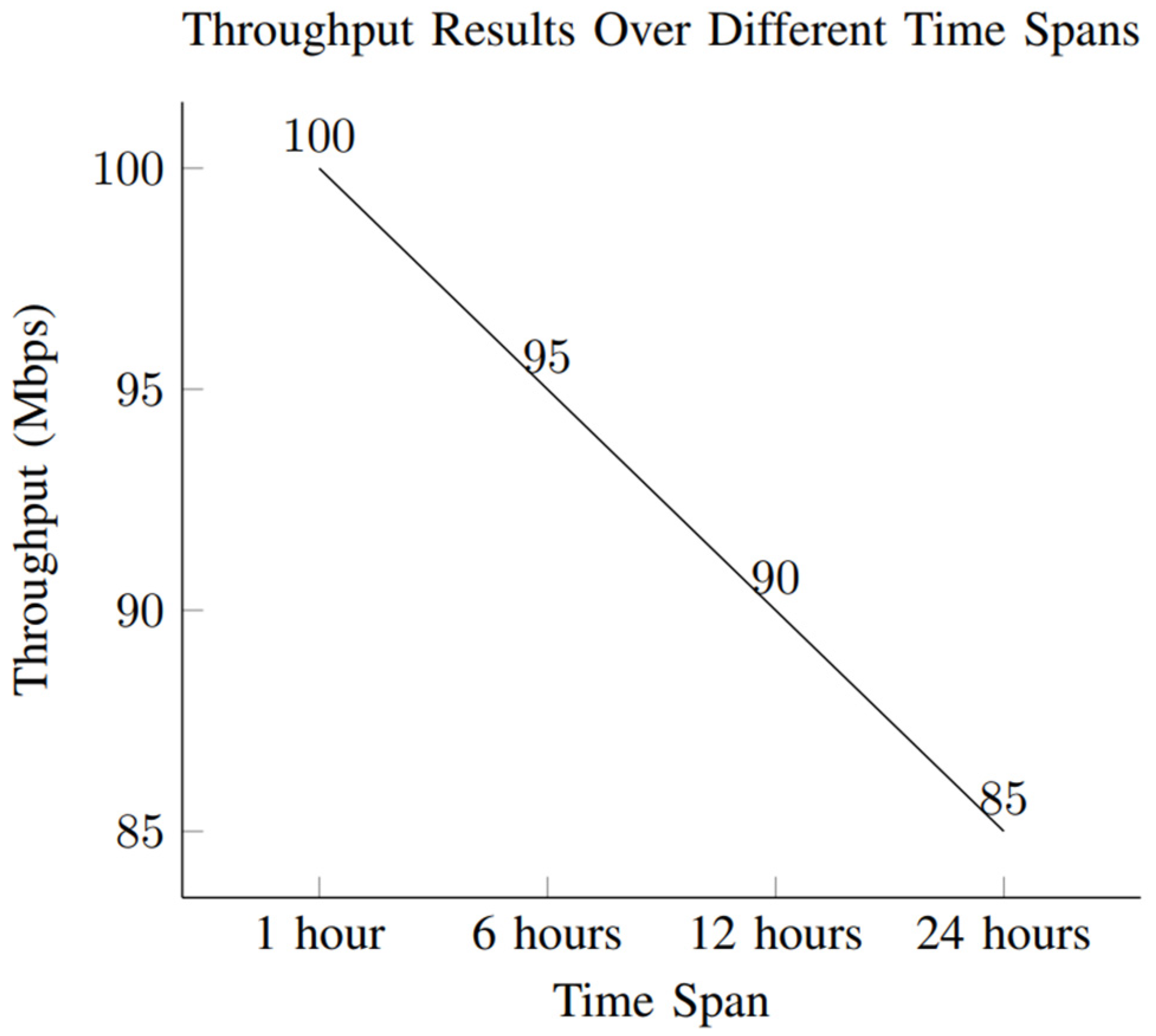Network Slicing in 6G: A Strategic Framework for IoT in Smart Cities
Abstract
:1. Introduction
- Identifying the most efficient configurations for network slices within the context of 6G to meet the diverse communication requirements of smart cities’ IoT applications.
- Addressing the challenge of resource allocation across network slices to ensure seamless connectivity and fast communication for the multitude of IoT devices in smart city environments.
- Examining and proposing robust security measures to protect data transmitted within network slices, considering the privacy concerns associated with the vast amount of sensitive information generated by smart city IoT devices.
- Investigating potential challenges in integrating different network slices and devices, aiming to develop guidelines that facilitate smooth communication across diverse IoT ecosystems within smart cities.
- Developing scalable implementation strategies for network slicing technologies in 6G, considering the anticipated expansion of smart city IoT applications and the need for adaptable and future-proof communication infrastructure.
- Comprehensive setup examination: conducting an exhaustive exploration of innovative techniques to dynamically ascertain optimal setups for network slices in 6G, specifically tailored for smart cities’ IoT applications.
- Resource allocation strategies: introducing novel strategies to overcome resource allocation challenges, ensuring efficient and minimal-delay connectivity for a wide range of IoT devices in smart urban environments.
- Enhanced data security: improving the security of sensitive data transmitted within network slices for smart city IoT applications by implementing novel security techniques such as encryption and authentication protocols.
- Interoperability solutions: addressing interoperability obstacles by developing cutting-edge communication protocols and standards to enable seamless communication between different network slices and IoT devices.
- Scalable implementation frameworks: introducing scalable and future-proof strategies for implementing network slicing technologies in 6G, providing a robust foundation for accommodating the anticipated expansion of smart city IoT applications.
- This research endeavors to advance our understanding of the implications, challenges, and solutions related to leveraging network slicing technologies in 6G for integrating the IoT in smart cities.
2. Literature Review
3. Materials and Methods
3.1. Designing Network Slicing for 6G
3.1.1. Mathematical Model
3.1.2. Objective Function
3.2. Implementation of Smart Cities’ IoT in Context of Network Slicing Technologies in 6G
3.2.1. Mathematical Model
Objective Function
- represents the decision variables for the optimal slicing configuration.
- is the number of metrics considered.
- denotes the performance metric for the -th aspect of the optimal slicing configuration.
- is the weight assigned to the -th metric.
Constraints
- and are inequality and equality constraints, respectively.
- is the number of inequality constraints, and is the number of equality constraints.
Decision Variables
| Algorithm 1: Implementation Process for Smart Cities’ IoT in the Context of Network Slicing Technologies in 6G |
| Input: Requirements, Metrics, Constraints, Objectives Output: Optimized Network Slicing Configuration Initialization: Initialize Configuration: Random or Based on Previous Knowledge While |
- 1.
- Evaluate performance:
- Deploy the current network slicing configuration.
- Measure performance metrics using defined metrics.
- 2.
- Adjust parameters:
- Update configuration parameters based on evaluation.
- 3.
- Optimize configuration:
- Utilize optimization algorithms (e.g., genetic algorithms, simulated annealing) to refine the configuration.
- 4.
- Monitor performance:
- Continuously monitor the performance during adjustments.
- 5.
- Termination check:
- If performance is satisfactory, break.
- 6.
- Increment iteration counter:
- 7.
- Finalize design:
- Document the optimized network slicing configuration.
- Output optimized configuration.
3.3. Performance Evaluation
3.3.1. Latency Metrics
3.3.2. Reliability Metrics
3.3.3. Throughput Metrics
3.3.4. Scalability Metrics
3.3.5. Security Metrics
4. Results and Discussion
4.1. Latency Results
4.2. Reliability Results
4.3. Throughput Results
4.4. Scalability Results
4.5. Security Results
4.6. Discussion
4.6.1. Performance Evaluation
Round-Trip Time (RTT) and One-Way Latency
Packet Loss Rate and Availability
Throughput
Network Capacity and Resource Utilization
4.6.2. Scalability and Adaptability
4.6.3. Security
4.6.4. Overall Implications
4.6.5. Limitations and Future Directions
5. Conclusions
Author Contributions
Funding
Institutional Review Board Statement
Informed Consent Statement
Data Availability Statement
Acknowledgments
Conflicts of Interest
References
- Shen, L.H.; Feng, K.T.; Hanzo, L. Five Facets of 6G: Research Challenges and Opportunities. ACM Comput. Surv. 2023, 55, 1–39. [Google Scholar] [CrossRef]
- Nawaz, S.J.; Sharma, S.K.; Wyne, S.; Patwary, M.N.; Asaduzzaman, M. Quantum Machine Learning for 6G Communication Networks: State-of-the-Art and Vision for the Future. IEEE Access 2019, 7, 46317–46350. [Google Scholar] [CrossRef]
- Fadhil, A.M. Next-Generation Urban Intelligence: Integrating 6G Communication and Blockchain Technology for Smart City Advancements. IJCSMC 2023, 12, 29–35. [Google Scholar] [CrossRef]
- Zhou, F.; Yu, P.; Feng, L.; Qiu, X.; Wang, Z.; Meng, L.; Kadoch, M.; Gong, L.; Yao, X. Automatic Network Slicing for IoT in Smart City. IEEE Wirel. Commun. 2020, 27, 108–115. [Google Scholar] [CrossRef]
- Nguyen, D.C.; Ding, M.; Pathirana, P.N.; Seneviratne, A.; Li, J.; Niyato, D.; Dobre, O.; Poor, H.V. 6G Internet of Things: A Comprehensive Survey. IEEE Internet Things J. 2022, 9, 359–383. [Google Scholar] [CrossRef]
- Puspitasari, A.A.; An, T.T.; Alsharif, M.H.; Lee, B.M. Emerging Technologies for 6G Communication Networks: Machine Learning Approaches. Sensors 2023, 23, 7709. [Google Scholar] [CrossRef] [PubMed]
- Murroni, M.; Anedda, M.; Fadda, M.; Ruiu, P.; Popescu, V.; Zaharia, C.; Giusto, D. 6G—Enabling the New Smart City: A Survey. Sensors 2023, 23, 7528. [Google Scholar] [CrossRef] [PubMed]
- Mahmood, N.H.; Böcker, S.; Moerman, I.; López, O.A.; Munari, A.; Mikhaylov, K.; Clazzer, F.; Bartz, H.; Park, O.S.; Mercier, E.; et al. Machine Type Communications: Key Drivers and Enablers towards the 6G Era. EURASIP J. Wirel. Commun. Netw. 2021, 2021, 134. [Google Scholar] [CrossRef]
- Banafaa, M.; Shayea, I.; Din, J.; Hadri Azmi, M.; Alashbi, A.; Ibrahim Daradkeh, Y.; Alhammadi, A. 6G Mobile Communication Technology: Requirements, Targets, Applications, Challenges, Advantages, and Opportunities. Alex. Eng. J. 2023, 64, 245–274. [Google Scholar] [CrossRef]
- Chowdhury, M.Z.; Shahjalal, M.; Ahmed, S.; Jang, Y.M. 6G Wireless Communication Systems: Applications, Requirements, Technologies, Challenges, and Research Directions. IEEE Open J. Commun. Soc. 2020, 1, 957–975. [Google Scholar] [CrossRef]
- Ho, T.M.; Tran, T.D.; Nguyen, T.T.; Kazmi, S.M.A.; Le, L.B.; Hong, C.S.; Hanzo, L. Next-Generation Wireless Solutions for the Smart Factory, Smart Vehicles, the Smart Grid and Smart Cities. arXiv 2019, arXiv:1907.10102. [Google Scholar]
- Kumar, R.; Gupta, S.K.; Wang, H.; Kumari, C.S. From Efficiency to Sustainability: Exploring the Potential of 6G for a Greener Future. Sustainability 2023, 15, 16387. [Google Scholar] [CrossRef]
- Moya Osorio, D.P.; Ahmad, I.; Sanchez, J.D.V.; Gurtov, A.; Scholliers, J.; Kutila, M.; Porambage, P. Towards 6G-Enabled Internet of Vehicles: Security and privacy. IEEE Open J. Commun. Soc. 2022, 3, 82–105. [Google Scholar] [CrossRef]
- Andronie, M.; Lăzăroiu, G.; Iatagan, M.; Hurloiu, I.; Ștefănescu, R.; Dijmărescu, A.; Dijmărescu, I. Big Data Management Algorithms, Deep Learning-Based Object Detection Technologies, and Geospatial Simulation and Sensor Fusion Tools in the Internet of Robotic Things. ISPRS Int. J. Geoinf. 2023, 12, 35. [Google Scholar] [CrossRef]
- Zinno, R.; Haghshenas, S.S.; Guido, G.; Rashvand, K.; Vitale, A.; Sarhadi, A. The State of the Art of Artificial Intelligence Approaches and New Technologies in Structural Health Monitoring of Bridges. Appl. Sci. 2023, 13, 97. [Google Scholar] [CrossRef]
- Al Amin, A.; Hong, J.; Bui, V.H.; Su, W. Emerging 6G/B6G Wireless Communication for the Power Infrastructure in Smart Cities: Innovations, Challenges, and Future Perspectives. Algorithms 2023, 16, 474. [Google Scholar] [CrossRef]
- Dogra, A.; Jha, R.K.; Jain, S. A Survey on beyond 5G Network with the Advent of 6G: Architecture and Emerging Technologies. IEEE Access 2021, 9, 67512–67547. [Google Scholar] [CrossRef]
- Wijethilaka, S.; Liyanage, M. Survey on Network Slicing for Internet of Things Realization in 5G Networks. IEEE Commun. Surv. Tutor. 2021, 23, 957–994. [Google Scholar] [CrossRef]
- Guo, F.; Yu, F.R.; Zhang, H.; Li, X.; Ji, H.; Leung, V.C.M. Enabling Massive IoT Toward 6G: A Comprehensive Survey. IEEE Internet Things J. 2021, 8, 11891–11915. [Google Scholar] [CrossRef]
- Weerarathna, I.N.; Raymond, D.; Luharia, A. Human-Robot Collaboration for Healthcare: A Narrative Review. Cureus 2023, 15. [Google Scholar] [CrossRef]
- Abbas, K.; Cho, Y.; Nauman, A.; Khan, P.W.; Khan, T.A.; Kondepu, K. Convergence of AI and MEC for Autonomous IoT Service Provisioning and Assurance in B5G. IEEE Open J. Commun. Soc. 2023, 4, 1. [Google Scholar] [CrossRef]
- Garratt, B.J. The Development of a Wrist Rehabilitation Device for Movement Therapy. Univ. South. Qld. 2009, 18–37. [Google Scholar]
- Serôdio, C.; Cunha, J.; Candela, G.; Rodriguez, S.; Sousa, X.R.; Branco, F. The 6G Ecosystem as Support for IoE and Private Networks: Vision, Requirements, and Challenges. Future Internet 2023, 15, 348. [Google Scholar] [CrossRef]
- Charu, M.; Kumar, A.; Upadhyay, A.; Chauhan, M.P. A 6G Network: Future of Nations? Challenges in 6G Communications. J. Propuls. Technol. 2023, 44, 7376–7386. [Google Scholar]
- Lovén, L.; Shahid, H.F.; Nguyen, L.; Harjula, E.; Silvén, O.; Pirttikangas, S.; López, M.B. Semantic Slicing across the Distributed Intelligent 6G Wireless Networks. In Proceedings of the 2023 20th Annual IEEE International Conference on Sensing, Communication, and Networking (SECON), Madrid, Spain, 11–14 September 2023; pp. 79–84. [Google Scholar] [CrossRef]
- Kalla, A.; de Alwis, C.; Porambage, P.; Gür, G.; Liyanage, M. A Survey on the Use of Blockchain for Future 6G: Technical Aspects, Use Cases, Challenges and Research Directions. J. Ind. Inf. Integr. 2022, 30, 100404. [Google Scholar] [CrossRef]







| Study | Objective | Methodology | Techniques | Results | Limitations |
|---|---|---|---|---|---|
| [2] | Explore 6G impact on smart cities | Literature review | Analysis of 6G requirements | Highlight need for 6G advancements | Limited empirical data |
| [6] | Survey 6G wireless communication | Thematic analysis | Categorization of 6G technologies | Holistic understanding of 6G wireless communication | Lack of real-world implementation validation |
| [8] | Examine next-gen wireless solutions | Theoretical framework | Evaluation of wireless system components | Viability of next-gen wireless solutions | Theoretical nature may not account for practical challenges |
| [10] | Survey 6G IoT | Literature review | Content analysis of IoT applications | Roadmap for IoT in 6G | Limited discussion on security aspects |
| [14] | Identify facets of 6G | Qualitative analysis | Categorization of challenges | Structured overview of 6G facets | Limited quantitative data |
| [16] | Automate network slicing for IoT | Simulation | Framework proposal | Feasibility of automated network slicing | Simulations may not fully represent real-world scenarios |
| [18] | Integrate 6G and block chain | Conceptual framework | Architectural design | Secure and decentralized urban intelligence | Limited validation through practical implementations |
| Metric | Result |
|---|---|
| RTT | 5 ms |
| One-way latency | 2 ms |
| Metric | Result |
|---|---|
| Packet loss rate | 0.5% |
| Availability | 99.8% |
| Metric | Result |
|---|---|
| Throughput | 100 Mbps |
| Metric | Result |
|---|---|
| Network Capacity | 1000 concurrent connections |
| Resource Utilization | 80% |
| Metric | Result |
|---|---|
| Encryption strength | 256-bit |
| Authentication success rate | 98% |
Disclaimer/Publisher’s Note: The statements, opinions and data contained in all publications are solely those of the individual author(s) and contributor(s) and not of MDPI and/or the editor(s). MDPI and/or the editor(s) disclaim responsibility for any injury to people or property resulting from any ideas, methods, instructions or products referred to in the content. |
© 2024 by the authors. Licensee MDPI, Basel, Switzerland. This article is an open access article distributed under the terms and conditions of the Creative Commons Attribution (CC BY) license (https://creativecommons.org/licenses/by/4.0/).
Share and Cite
Alwakeel, A.M.; Alnaim, A.K. Network Slicing in 6G: A Strategic Framework for IoT in Smart Cities. Sensors 2024, 24, 4254. https://doi.org/10.3390/s24134254
Alwakeel AM, Alnaim AK. Network Slicing in 6G: A Strategic Framework for IoT in Smart Cities. Sensors. 2024; 24(13):4254. https://doi.org/10.3390/s24134254
Chicago/Turabian StyleAlwakeel, Ahmed M., and Abdulrahman K. Alnaim. 2024. "Network Slicing in 6G: A Strategic Framework for IoT in Smart Cities" Sensors 24, no. 13: 4254. https://doi.org/10.3390/s24134254





